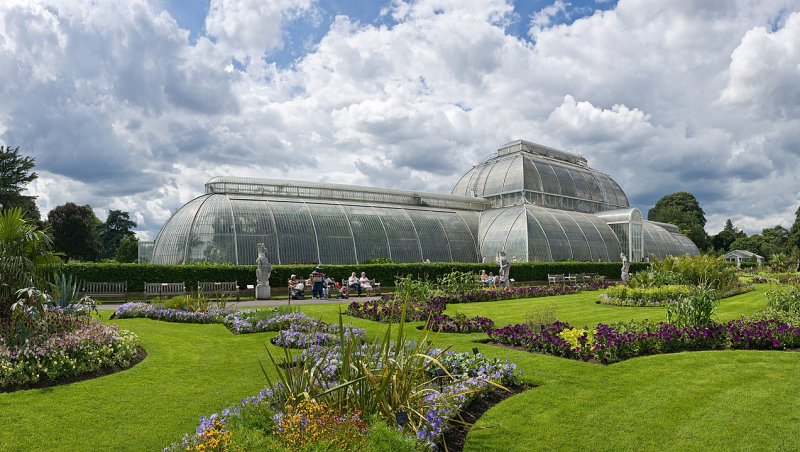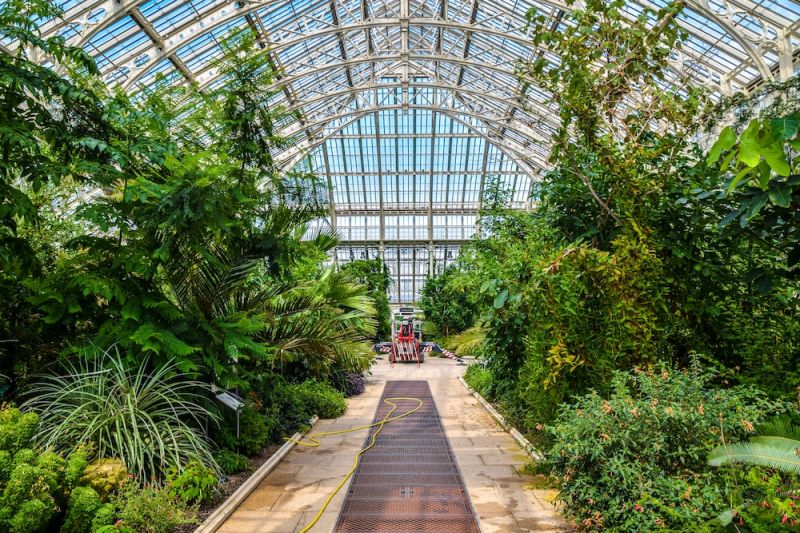Kew Gardens
Kew Gardens is a botanic garden in southwest London that holds the world's most extensive and diversified botanical and mycological collections. Its living collections include part of the 27,000 taxa curated by Royal Botanic Gardens, Kew, and the herbarium, one of the largest in the world, with over 8.5 million preserved plant and fungus specimens. The library has around 750,000 books, and the pictures collection has over 175,000 prints and drawings of plants. It is a World Heritage Site and one of London's most popular tourist attractions.
The Kew site, which was formally established in 1759, but can be traced back to Henry, Lord Capell of Tewkesbury's exotic garden at Kew Park consists of 132 hectares (330 acres) of gardens and botanical glasshouses, four Grade I listed buildings, and 36 Grade II listed structures, all set in an internationally significant landscape. The Register of Historic Parks and Gardens classifies it as Grade I.
The Royal Botanic Gardens, Kew, along with Wakehurst Botanic Gardens in Sussex, are managed by the Royal Botanic Gardens, Kew, an internationally important botanical research and education institution that employs over 1,100 people and is a non-departmental public body sponsored by the Department for Environment, Food, and Rural Affairs.
Opened: 1759
Location: London, Borough of Richmond upon Thames, England
Area: 121 hectares (300 acres)













